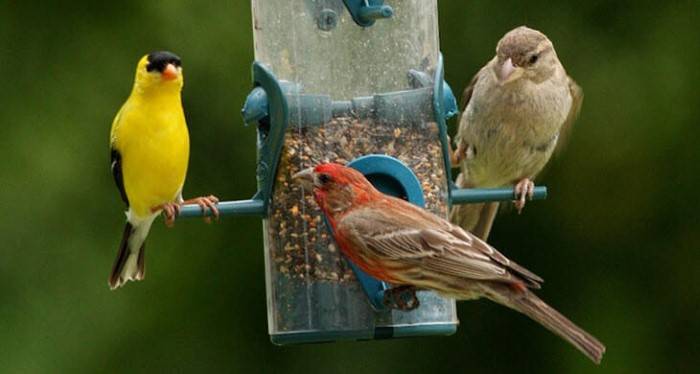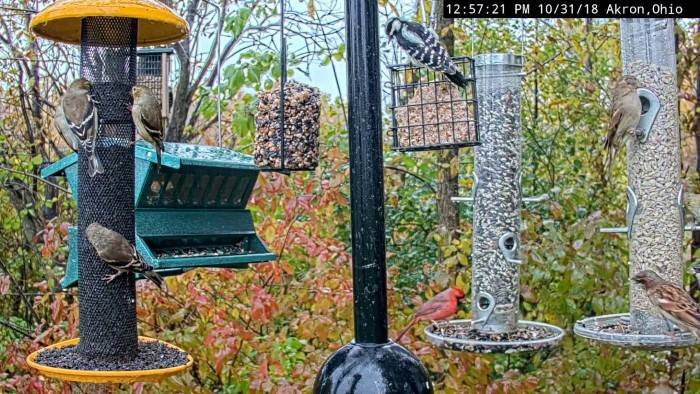A bird feeding station is a focal point in any backyard or garden, offering avian visitors a reliable source of food and a safe haven to rest and recharge. Whether you’re a seasoned bird enthusiast or just starting, setting up a bird feeding station can bring joy, wonder, and a deeper connection to the natural world. In this comprehensive guide, we’ll explore the essential components, design considerations, maintenance tips, and creative ideas for creating your own bird feeding station that will attract a diverse array of feathered guests.
Understanding Bird Feeding Behavior

Dietary Preferences:
Different bird species have unique dietary preferences, ranging from seeds and nuts to insects, fruits, and nectar. Understanding the feeding habits of local bird populations is key to selecting the right food offerings for your feeding station.
Feeding Habits:
Birds exhibit various feeding behaviors, including ground-feeding, perching, and clinging. Providing a variety of feeding stations and food types accommodates the diverse needs and preferences of different bird species.
Essential Components of a Bird Feeding Station
Feeder Types:
Choose from a wide range of feeder types, including hopper feeders, tube feeders, platform feeders, suet feeders, and nectar feeders, to cater to the dietary preferences and feeding behaviors of different birds.
Food Offerings:
Offer a diverse selection of bird foods, such as seeds, nuts, suet, mealworms, fruits, and nectar, to attract a variety of bird species year-round. Opt for high-quality, fresh foods to ensure the health and well-being of visiting birds.
Water Source:
Incorporate a bird bath, shallow dish, or water feature into your feeding station to provide birds with access to clean drinking water and bathing opportunities. Fresh water is essential for maintaining hydration and hygiene, especially during hot weather and winter months.
Shelter and Perching Areas:
Surround your feeding station with natural cover, such as trees, shrubs, and dense vegetation, to provide birds with shelter, protection from predators, and perching spots while they feed.
Design Considerations and Placement
Location:
Choose a strategic location for your feeding station, ideally near natural cover and away from potential hazards such as predators, reflective surfaces, and high-traffic areas. Ensure easy access for both birds and human observers to maximize visibility and enjoyment.
Height and Accessibility:
Position feeders at varying heights and distances from the ground to accommodate different bird species and feeding behaviors. Provide ample space between feeders to minimize competition and territorial disputes among birds.
Visibility and Observation:
Place feeders near windows, patios, or seating areas where you can observe bird activity and enjoy close-up views of visiting birds without disturbing them. Consider installing bird-watching blinds or shelters for enhanced viewing opportunities.
Maintenance and Care
Regular Cleaning:
Maintain cleanliness and hygiene at your feeding station by regularly cleaning feeders, water sources, and surrounding areas. Use a mild detergent solution and a brush to remove debris, mold, and bacteria buildup from feeders and birdbaths.
Food Rotation:
Rotate and replenish bird food regularly to ensure freshness and prevent spoilage. Remove old or moldy food and clean feeders before refilling them with fresh food offerings.
Pest Management:
Implement pest control measures, such as baffles, squirrel-proof feeders, and ant moats, to deter unwanted visitors and minimize food wastage. Monitor feeders for signs of pest activity and adjust feeding practices accordingly.
Creative Ideas and Enhancements
DIY Projects:
Get creative with DIY bird feeder projects using recycled materials such as milk cartons, plastic bottles, and wooden pallets. Explore online tutorials and design ideas to customize feeders to your preferences and attract specific bird species.
Seasonal Decorations:
Enhance your feeding station with seasonal decorations, such as holiday-themed ornaments, colorful ribbons, and natural accents like pine cones and berries. Create a festive atmosphere that celebrates the changing seasons and delights both birds and humans alike.
Educational Resources:
Incorporate educational resources, such as bird identification guides, nest box plans, and informational signage, into your feeding station to promote learning and awareness about local bird species and their conservation needs.
Bird Feeding Stations
Benefits of Bird Feeding Stations
Wildlife Conservation:
Bird feeding stations provide essential food and shelter for birds, especially during periods of food scarcity, habitat loss, and extreme weather conditions. By supporting local bird populations, feeding stations contribute to broader conservation efforts and ecosystem health.
Community Engagement:
Bird feeding stations offer opportunities for community engagement, citizen science, and environmental education. Organize bird-watching events, feeder-building workshops, and bird-counting activities to foster connections with nature and promote stewardship.
Related Post:
Cracking the Cayuga Duck Egg Mystery: Unveiling the Secrets of Cayuga Duck Eggs
Exploring Duck-Chicken Compatibility: Can They Coexist?
Unraveling the Complex World of Aggressive Male Duck Behavior
A well-designed bird feeding station can transform your backyard or garden into a vibrant hub of avian activity, fostering a deeper appreciation for the beauty and diversity of wild birds. By providing nutritious food, clean water, and shelter, you can create a welcoming environment that attracts a wide range of bird species and promotes their well-being. Whether you’re a novice bird enthusiast or a seasoned birder, establishing a bird feeding station is a rewarding endeavor that enriches both human and avian lives alike. Let your imagination soar as you embark on the journey of creating a haven for your feathered friends!



